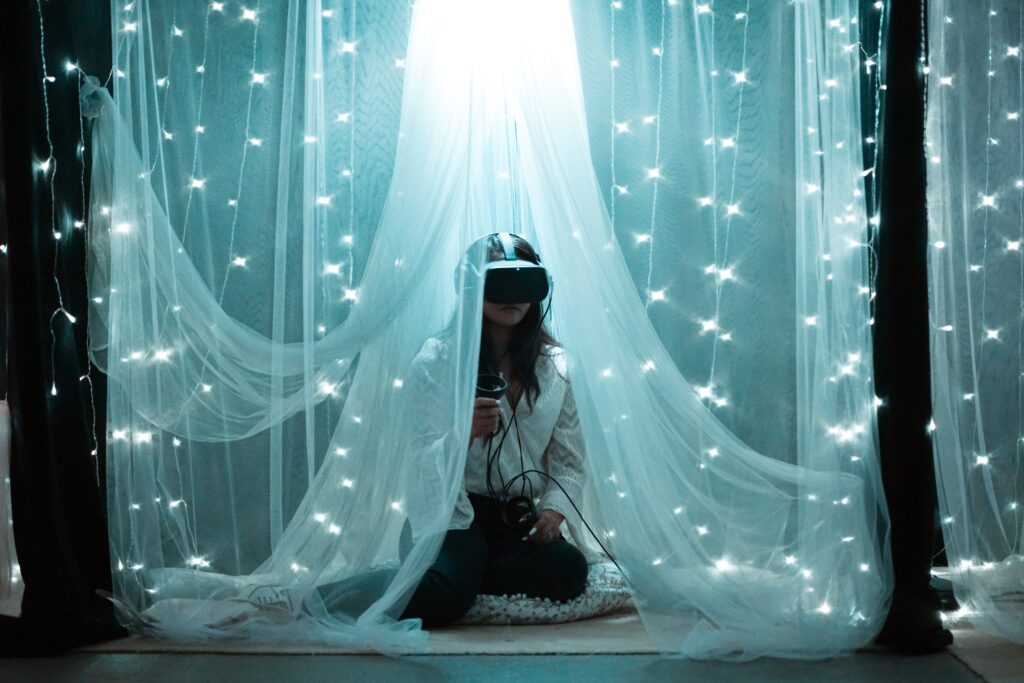Humanised virtual influencers are here. Are we ready for them?

In March 2022, Liz Snower delivered a talk to a live audience entitled, “do robots FEEL? Why AI ethics are REALLY important with ICONIQ.” ICONIQ are a digital company that bring virtual characters to life with artificial intelligence. During the event, Liz snower shows off her flagship creation, Kuki; an impressive female AI robot, or more accurately, an autonomous CGI character, who has interacted with 25 million people across the globe. Kuki has worked with top luxury fashion brands, teleported via hologram, rejected numerous marriage proposals and throws parties on virtual platform, Roblox.
One particular part of Liz Snower’s talk caught my attention. She tells her audience, with Kuki by her side and a serious expression, “in a couple of years all of us will find ourselves in numerous situations where we are talking to something like this and it will look so realistic that it could have fooled us.”
Kuki is one of many human-like CGI characters that are the beginning and crossing to a new world; one that has been prophesized by sci-fi authors and taken into slow fruition by the minds across the largest tech companies. As we take our first baby steps into the metaverse, many brands and businesses are investing in these virtual avatars, also known as “virtual influencers” to market their products. We, as consumers, also believe and buy into this reality; 42% of gen Z and millennials followed a virtual influencer without realising it was CGI and a study in 2022 conducted by the influencer marketing factory showed 35% of consumers said they had purchased a product promoted by a virtual influencer.
Today, the gap between reality and digital is rapidly closing. Many of us are finding ourselves surrounded by the idea that we should value digital avatars in the same way we value human beings simply because they’re made to look and behave like us, or arguably, trump our capabilities. In 2017, Saudi Arabia were the first nation to grant citizenship to a female robot named Sophia; Turkey’s first CGI actor, Aypera signed a movie contract with one of Turkey’s most famous movie producers and Tinder’s new campaign shows lovers linking arms that are both human and virtual. Frighteningly, there have been protests by niche groups demanding that robots have human rights. Underlying these engineered relationships between people and virtual characters is a growing capitalist marketplace; us observing virtual beings that are showcasing a virtual marketplace advertising the biggest businesses and brands on the planet.
Virtual influencers are slowly becoming more favoured by luxury brands and companies because, reiterating Liz Snower’s statement, these avatars are “fooling us” and gaining power over our purchasing decisions. When we’re on social media, it is easy to equalise interactions between real people and virtual influencers, since we miss the physical and holistic value of a human being through this medium. We behave differently online; more performative, watered down and less of ourselves, and we are perceived differently by others. Human beings in an online space become altered and slightly dehumanised. Really, it isn’t that virtual influencers are the same as us, but rather, when engaged in this particular medium, we look, feel and behave differently, and it isn’t hard for virtual influencers to compete with this perception that does not feel entirely human or real.
Since social media has become a piggybank of data to manipulate our purchasing decisions, virtual influencers are the portal through which brands and companies can “humanise” selling stuff without using “human” influencers that may have got them into trouble in the past. It is easy to see the appeal of virtual influencers in a capitalist marketplace; Ageless, never sick and accessible anywhere in the world, 24/7. They can be what human beings cannot.
It is important to understand that virtual influencers are yet to be completely autonomous since they still require a human team to craft and post stories on their social media. Kuki is one of the first virtual influencers to be powered by artificial intelligence. Although other virtual influencers, such as Miquela Sousa, advertise themselves as an AI robot, these CGI avatars are completely dependent on a human team. Kuki, on the other hand is powered by “rules based” artificial intelligence, meaning the content produced by the AI has been human-coded. This differs to generative AI, which learns algorithms on its own to create new content. Chat GPT, for example, uses generative AI to power its content. Using a similar system to social media, with advanced algorithms and machine learning techniques, AI influencers can analyse data on consumer behaviour and references to create an infinite loop of more content that mirrors the “interests” of their followers. It feels like the same old story; consumers unconsciously feeding a virtual marketplace that becomes less dependent on human marketing and more lucrative when shifting to the virtual.
The rise of generative artificial intelligence has produced widespread terror and panic; Human beings feel threatened by a machine’s intelligence, so threatened that we believe AI has the capability to replace our jobs as writers, artists, but more worryingly, as Jaron Lanier writes so eloquently “the problem is not just economic, but spiritual. If a person is not valued economically in a market-oriented society, then they are not valued in a profound way.” In this time of rapid technological change we are losing ourselves and the ability to see our power as human beings. Artificial intelligence’s premise should not engulf us with a fear of purposelessness, but should remind us that our complexity and will to extend ourselves for creativity and new ideas cannot be replicated by a machine. Human beings will always have more to give and each of us holds a mystery that cannot exist in a machine that is only a “Frankenstein” and not capable of the birth of anything new.
When we imagine occupying a world where virtual humans become increasingly intelligent and begin to transcend the economic market place, we must recognise the vital responsibilities we hold to our technologies and how we choose to use them. We must see ourselves as mirrors to machines. ICONIQ reflects this responsibility in their robot laws which feel so crucial to our future. One of their most powerful statements is as follows
“An AI should aways augment and humanise human, they should not dehumanise humans.”
This is a choice and it is a human one that will never be the decision of a machine.
Hannah La Ronde is a creative writing graduate and freelance writer with a keen interest in examining the intricate relationship between technology and human behaviour. Her work has appeared in The Huffington Post, Galdem Magazine, The Spill Mag and other publications.





